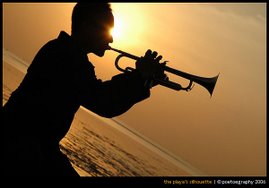Cause of ball lightning
Ball lightning is one of the few phenomena that are widely accepted in the popular and scientific community as being real, although none of the many theories can fully explain all reports of people who observed ball lightning.
The more 'successful' theories explain ball lightning as being caused either by glowing carbon fibres, 'maser' of the air (microwave amplification), gas discharges and such. Probably there are several different kinds of ball lightning that can be caused by different mechanisms. Whatever its cause, ball lightning is quite rare and very exciting to witness, if you are interested in lightning and thunderstorms.
Ball lightning is mostly witnessed as being a spherical glowing ball usually a few centimeters or inches in diameter, similar in brightness to a 100-Watt light bulb. It may exist several seconds, drift through the air, drift through glass panes or be connected to a metal structure, and it may end silently or explosively.
Ball lightning is said to occur mostly during active thunderstorms, and many reports seem to come from relatively flat areas (not mountainous). Almost every storm may produce ball lightning but they are rarely seen.
Photographing ball lightning
I have never seen a photograph that clearly shows ball lightning. Many if not most photos I have seen either show streaked photos from artificial light sources or powerline failures (sparks or fireballs originating from powerline transformers and such). Other photos possibly show ball lightning but very far away.
The best tactic to have any chance to document ball lightning is to have a digital camera ready to use at all times during a thunderstorm. That camera must have a lens attached and be turned on. But even that tactic may not work. The only possible ball lightning I have seen existed so shortly that I didn't even have time to grab my camera, even though it was ready to take pictures.
|
A photo that shows a streaked light purportedly being ball lightning often turns out to be fake. There is even more reason to be suspicious when the photographer didn't see anything unusual during the exposure. |
Some possible causes for fake ball lightning photos
As said above, most photos that purportedly show ball lightning are either faked or accidentally show something else. Some possibilities for misidentification of ball lightning are:
- powerline faults, usually in the form of sparks or plasma arcs at transformers ('pole pigs' as they are called in the USA).
- photos of lightning while the tripod-mounted camera was bumped during the time exposure. Even though the lightning may not be blurred, because the bumping of the camera could have occurred before or after the flash, any foreground light such as a streetlight will show curious tracks along the photo with a bright ball of light at one end (the location where the streetlight appeared during most of the time exposure).
- fireflies that fly through the camera view; since they light up only briefly, they will show a short track of light in the frame.
- fireworks and flares.
- glowing sparks that jump away from the contact point of lightning with ground the instant it strikes.








